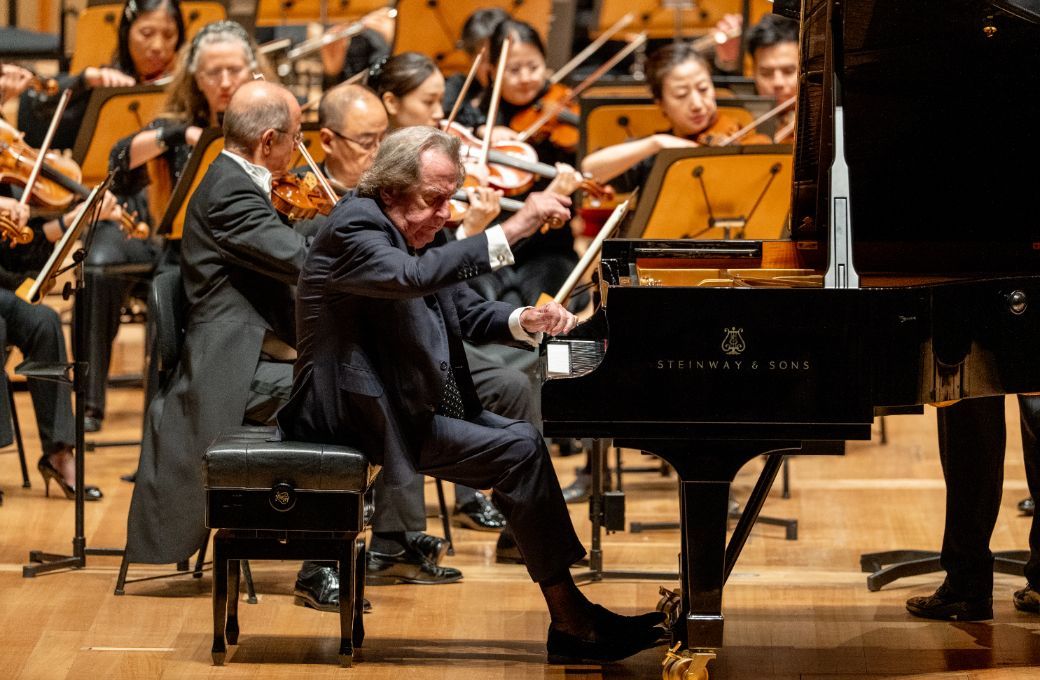Whoever devised this programme for the Singapore Symphony Orchestra deserves a prize for creativity, by coupling an “immortal beloved” piano concerto with three relative rarities in a concert which celebrated life and the joy of music itself.

First, there was the unfinished business of Austrian pianist Rudolf Buchbinder completing his Beethoven piano concerto cycle, having performed the other four concertos in December 2023. This time, he did not need to lead the orchestra from the keyboard, instead having Polish guest conductor Michał Nestorowicz doing the honours. For good reason, Beethoven’s Piano Concerto no. 5 in E flat major, known in Anglophone nations as “the Emperor”, is never referred to as the Kaiser in Austria or Germany. It was just a popular nickname based on an apocryphal “C’est l’empereur !” quip from some Napoleonic officer who first heard its regal refrains.
Freed from stereotype, Buchbinder’s approach to the opening cadenza was taken very swiftly, almost perfunctory and certainly without imperial pretensions. That set the tone of the first movement despite the orchestra’s best efforts to keep up the bombast. Playing down “the Emperor” was a refreshing way to view this warhorse, but there was no denying the sense of nobility in the central slow movement, and the final Rondo romped home with pure unfettered joy. That is how most people will remember this Emperor, rather than its hurried beginning. The encore of the finale from Beethoven’s Tempest Sonata (Op.31 no.2), played fast and unsentimental, was a sneak preview of Buchbinder’s solo recital the following evening.
The concert opened with Polish-Lithuanian composer Grazyna Bacewicz’s Overture, a very effective showpiece for rapid string figurations. Composed during the Nazi occupation, its heroically defiant tone of final victory wore well, and I would sooner hear this than the umpteenth performance of Glinka’s Ruslan and Ludmilla or Shostakovich’s Festive overtures.
Not to be overshadowed were the Singapore premieres of two Carl Nielsen cantatas. A switch of performance sequence saw Springtime in Funen heard first. Sung in Danish to texts by Aage Bernstsen, there was a provincial innocence to this music which painted rustic rural scenes, many miles away from his angsty symphonies. The trio of Danish soloists soprano Frederikke Kampmann, tenor Anders Kampmann and bass-baritone Steffen Bruun were excellent, but the scene was stolen by the Singapore Symphony Children’s Choir (Wong Lai Foon, Choirmaster) with 62 kids gambolling onstage for their minute-long cameo (Now we go out and play) before dispersing into the wings.
The other cantata was Hymnus Amoris (Hymn of Love), Nielsen’s first choral work, sung in Latin, a cradle-to-grave primer on aspects of love through the ages. Local baritone Wong Yang Kai joined the male soloists as a group of Very Old People singing “Love is my peace”, and there was a rare episode of dissonance with soprano Kampmann as An Unhappy Woman in “Love is my pain”. The Singapore Symphony Choruses of adults, youths and children had a field day with climaxes (“Love gives me life”) for once hitting the highs of Nielsen’s embattled symphonies. Love filled the air, not in the Carmina Burana way, but something non-carnal and far more wholesome.


